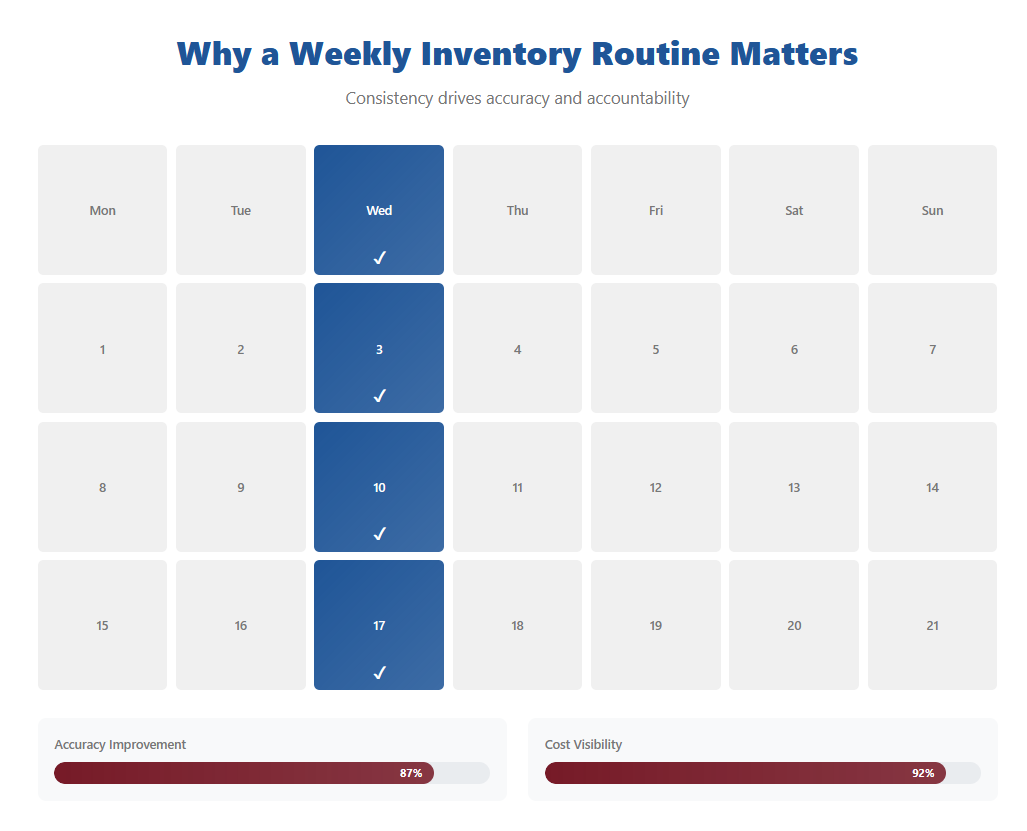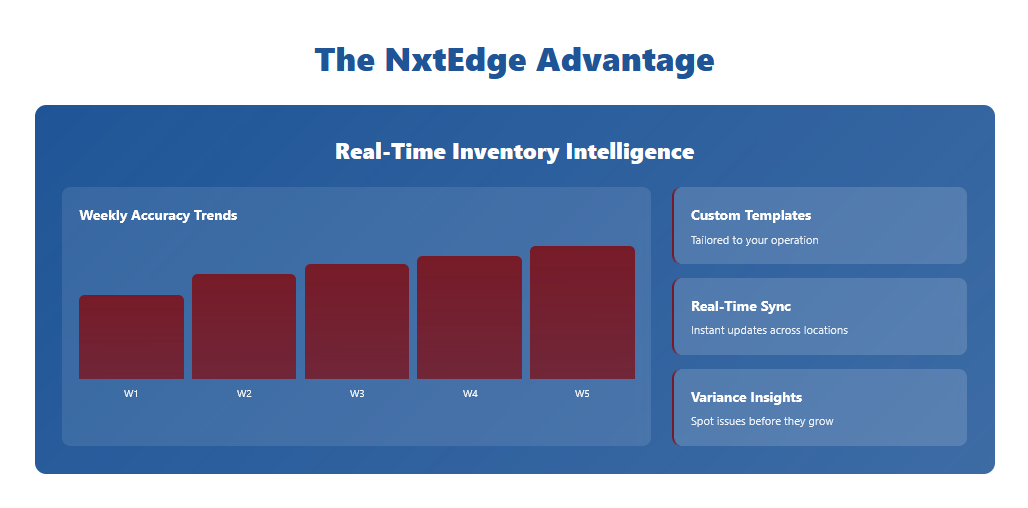For many operators, inventory feels like a task to “get through” — but in reality, it’s one of the most valuable habits a restaurant can build.
A weekly inventory routine gives you the consistency to spot waste, control costs, and make smarter purchasing decisions before problems grow.
When done right — and connected to your invoices and recipes — it becomes a cornerstone of profitability.
Why Weekly Inventory Matters
Daily fluctuations happen, but patterns appear weekly. A consistent inventory schedule gives operators:
-
Better cost visibility: Know exactly where your food dollars go.
-
Predictable ordering: Base purchases on verified counts, not assumptions.
-
Early problem detection: Identify waste, spoilage, or theft quickly.
-
Stronger accountability: Create a routine that keeps staff aligned and data accurate.
Weekly tracking builds habits that lead to long-term control.

Why Weekly Inventory Matters
Daily fluctuations happen, but patterns appear weekly. A consistent inventory schedule gives operators:
-
Better cost visibility: Know exactly where your food dollars go.
-
Predictable ordering: Base purchases on verified counts, not assumptions.
-
Early problem detection: Identify waste, spoilage, or theft quickly.
-
Stronger accountability: Create a routine that keeps staff aligned and data accurate.
Weekly tracking builds habits that lead to long-term control.

Why Weekly Inventory Matters
Daily fluctuations happen, but patterns appear weekly. A consistent inventory schedule gives operators:
-
Better cost visibility: Know exactly where your food dollars go.
-
Predictable ordering: Base purchases on verified counts, not assumptions.
-
Early problem detection: Identify waste, spoilage, or theft quickly.
-
Stronger accountability: Create a routine that keeps staff aligned and data accurate.
Weekly tracking builds habits that lead to long-term control.
What a Strong Inventory Routine Looks Like
To build a routine that actually works, focus on structure and simplicity.
-
Set a fixed schedule: Pick the same day and time every week — consistency builds accuracy.
-
Use pre-set count sheets: Organize items by storage area and category.
-
Pair two counters: One counts, one verifies — accuracy doubles.
-
Compare against usage and sales: Identify unusual variances right away.
-
Sync counts to invoices: Align actual stock levels with your purchasing data.
Consistency and structure turn a tedious task into a repeatable system.

The NxtEdge Advantage
NxtEdge combines automation, organization, and visibility for seamless weekly inventory management.
-
Custom count templates for each storage area
-
Live data integration with invoices, recipes, and accounting
-
Variance reporting that highlights cost drift and waste
-
Multi-location dashboards for group-wide oversight
Operators using NxtEdge don’t just “do inventory” — they manage it as part of a smarter cost control routine.

Key Takeaways
-
A weekly routine creates structure, accountability, and accuracy.
-
Automation connects counts to invoices and recipes in real time.
-
NxtEdge simplifies weekly inventory with live data and customizable workflows.





